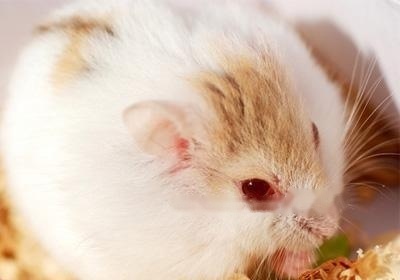
Amber Hamster
Length: 10-12cm
English name: Flying Fox, Pine Cat
Origin: Central and South Asia
Life: 7-10 years
red and whiteThe flying squirrel (scientific name: Petaurista alborufus) is a rodent that resembles Squirrel, 35-60 cm in length and 2000 grams in weight. The head is short and round, the eyes are large, the eye circles are red chestnut, and the pupils are particularly large. Body hair is red on the back of the body and white on the face and ventral surface. The tail is 40-50 cm long, almost equal to the length of the body. Nests are built in tree holes. Morning and evening activities are frequent, often alone. Feed on fruits such as chestnuts. Distributed in Myanmar, Assam in India, Thailand and Sichuan, Chongqing, Guangxi, Shaanxi and Yunnan in China.
Chinese name: red and white flying squirrel
Latin scientific name: Petaurista alborufus
Alternative names: flying fox, pine cat, white-faced flying squirrel, white-headed flying squirrel, White-fronted flying squirrels
Kingdom: Animalia
Department: Vertebrates
Class: Mammalia
Order: Rodents
Family: Squirrel
Genus: Flying Squirrel
Species: Red and white flying squirrel
Subspecies: 5 subspecies
Named and Date: Milne-Edwards, 1870
English Name: Red-and-white Giant
Flying Squirrel
Red and whiteThe flying squirrel is a large flying squirrel. The body length is 500-600 mm, the tail is shorter than the body, more than 400 mm long, and the hind feet are about 80 mm long. The head is white, the eye sockets are red chestnut, the chin, the upper part of the throat, both sides of the neck and the chest are all white, the front edge of the upper arm skin wing near the shoulder is also white, and the back of the body includes the neck, the outer base of the ear, the shoulder and the rest (except the back of the body). The middle of the back) is chestnut to light chestnut, with a large area of light yellow or white hair from the back to the base of the tail; chestnut and glossy in front of the back, chestnut brown above the skin wings, orange red below} Body belly is light orange russet, The base of the tail is about 1/4 orange russet, and the distal end to the tip of the tail becomes dark brown; the front and rear feet are red, and the toes are black.
A total of 4 subspecies. The named subspecies have red feet, a light yellow hairy area on the back of the body, and orange-red on the ventral surface of the body. The Hubei subspecies has black feet, bright red body and ventral surface, and almost no white hair. The Yunnan subspecies has red feet, a very light coat on the back and back of the body, and more white on the ventral surface.
The skull is almost the largest of the genus. The supraorbital process is triangular; the interorbital depression; the suture of the parietal bone is healed; the posterior end of the premaxilla reaches the horizontal line of the posterior end of the nasal bone. The midline of the left and right frontal bones also healed. The structure of the cheek teeth is relatively simple. The first upper premolar is like a small wooden plug, and the crown area is about 1/6 of that of the second upper premolar, and the crown of the latter is similar to the upper molar.
During the day, red and whiteFlying squirrels often crouch in tree holes or burrows, sleep with their head resting on their tail, and they come out to move and forage at night time. They live alone and feed on tree fruits, seeds, shoots, leaves, and insects. Every time you go out, you can go as far as 1 km away. The red and white flying squirrel also has a strange characteristic. No matter how far it is from the hole, it always has to return to the nest before expelling its feces.
In winter, red and white flying squirrels live in tree holes or rock caves, no longer go out for food, and enter hibernation. They do not resume their activities until the climate warms.
The red and white flying squirrel screeched as it glides. "Squeak", "squeak, squeak", "squeak, squeak, squeak", the sounds are long and short, this is the "language" that the red and white flying squirrels transmit information to each other. The sound of "squeak" means "safe and sound", and normal activities can be carried out; the two sounds of "squeak and squeak" are the sounds of chasing or escaping each other; the three sounds of "squeak, squeak and squeak" are made when threatened. emergency signal. When the cries of "Ziwu", "Wu, Wu" are issued, it is the time when the red and white flying squirrels are fighting against the enemy with their teeth and claws. In early spring, the red-and-white flying squirrel will make a "de-du-de-yi" call, which is a signal for the male red and white flying squirrel to court.